Everything you need to know about the DASH diet
Manage your weight, cut cholesterol, and lower your blood pressure with DASH.
Updated on November 13, 2024
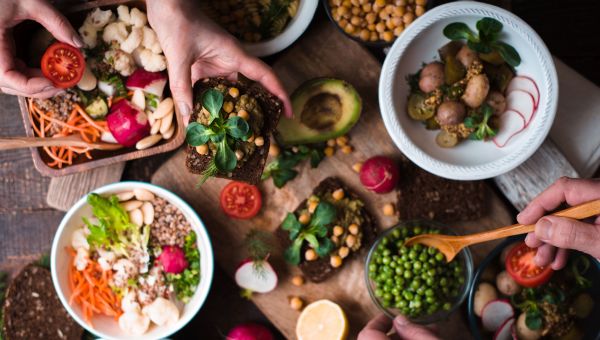
Each year, the DASH diet earns high marks across several categories in U.S. News & World Report’s Best Diets rankings. DASH is designed to help control high blood pressure, but when followed closely it may offer additional benefits, such as:
- Weight management
- Higher levels of HDL (aka “good” cholesterol)
- Lower levels of LDL (“bad” cholesterol)
- Improved blood sugar control over time (A1C level)
- Reduced risk of kidney stones
Madhu Challapalli, MD, a cardiologist and internist in New Braunfels, Texas, explains how the DASH diet works and offers simple tips to help you stick with it.
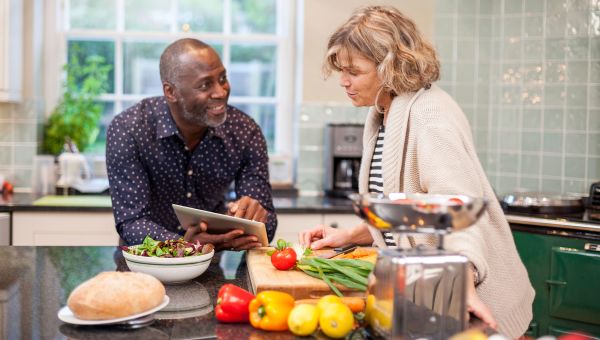
What is the DASH diet?
DASH stands for Dietary Approaches to Stop Hypertension. (Hypertension is the medical term for high blood pressure.) The eating plan encourages you to eat specific food groups that contain blood-pressure-lowering nutrients like potassium, magnesium, and fiber, which can be found in whole grains, lean protein sources, fruits, and vegetables. At the same time, you should reduce your intake of foods that can hurt your heart, such as salt (sodium), alcohol, sugary foods, and red meat.
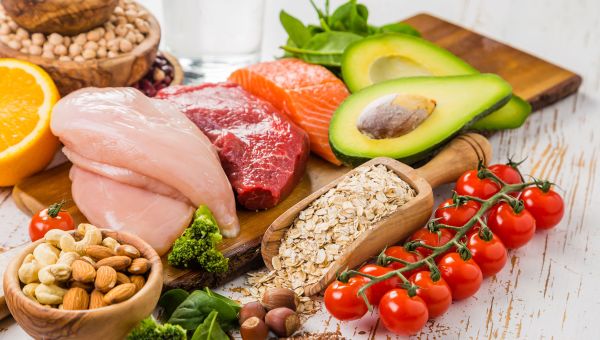
Foods to include on DASH
Before starting on DASH, check how many calories your diet should include based on your age, sex, activity level, and weight goals. That’s not because the DASH diet requires a strict daily calorie count, but because it will help you determine exactly how many servings you should get from each food group. For a typical 2,000-calorie-a-day diet, aim for:
- Grains (ideally whole grains): Six to eight servings daily
- Beans, seeds, and nuts: Four to five servings weekly
- Lean meat, including fish: Two servings or fewer daily
- Vegetables: Four to five servings daily
- Fruits: Four to five servings daily
- Healthy oils like olive oil: Two to three servings daily, while avoiding butter and margarine
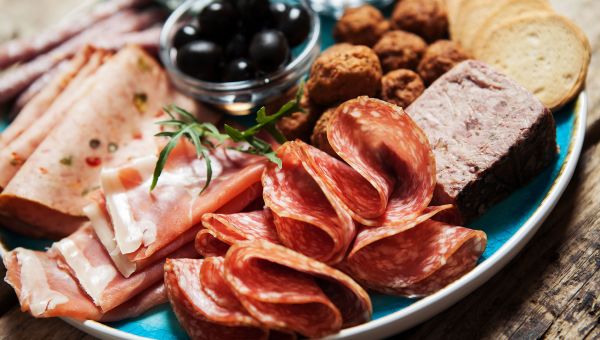
Foods to avoid on DASH
Limit your sodium intake to less than 2,300 milligrams (mg) daily. Your healthcare provider (HCP) may recommend cutting salt even more, depending on your personal or family health history.
Also reduce your red meat intake, keep sugary foods to fewer than five servings weekly, and avoid fried and fast foods. In general, it’s easier to follow the DASH diet when cooking at home because you can better control how much salt, sugar, and fat you put in your food.
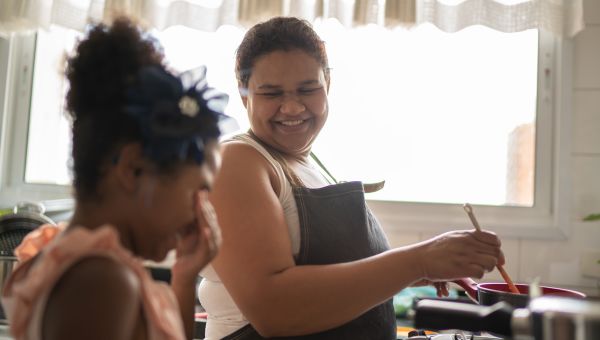
Who should go on the DASH diet?
“Theoretically, anybody could go on the DASH diet,” says Dr. Challapalli. It’s not only about lowering blood pressure but also about prevention.
“If you're doing the diet for disease prevention, then you might see a 3- to 4-millimeter drop in your systolic [top number] blood pressure,” he says. “We see a much bigger reduction in people who already have hypertension. They tend to experience a drop of around 8 to 14 millimeters.”
Consider this diet if you have:
- A family history of high blood pressure, high cholesterol, or heart disease
- A personal history of any of these conditions
- Diabetes or chronic kidney disease
Older adults, Black people, and people who are considered overweight or who lead a sedentary lifestyle are also at higher risk for hypertension and may benefit from the DASH diet.
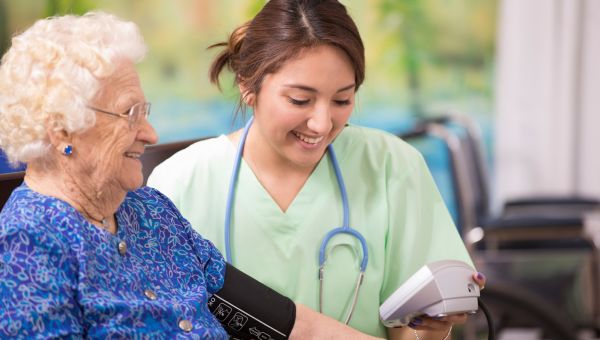
Know your numbers
Get a blood pressure screening when you start the DASH diet to learn your starting numbers.
You can get a free blood pressure screening at many pharmacies. But consider booking an appointment with an HCP. They can help you make a plan to reduce your disease risk, which may involve getting more exercise, quitting smoking, reducing stress, and more. They can also measure your starting weight and cholesterol.
Consider investing in an automatic blood pressure monitor for home, too. They cost around $15 to $45 or more, depending on the brand. That way, you can check your numbers regularly, track your progress, and get help if your numbers are high.
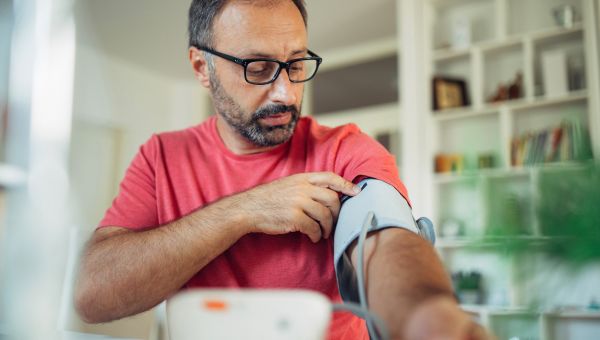
What’s normal?
Blood pressure is expressed in the form of a top number (known as systolic blood pressure) and a bottom number (known as diastolic blood pressure), measured in millimeters of mercury (mmHg). Normal blood pressure is less than 120 mmHg systolic and less than 80 mmHg diastolic. Elevated blood pressure is 120 to 129 mmHg and less than 80 mmHg diastolic. High blood pressure is 130 mmHg or higher systolic or 80 mmHg or higher diastolic.
If you get a reading above 180/120 mmHg, call 911 or have someone take you to a hospital emergency department immediately. Also call 911 immediately if you experience shortness of breath, chest pain, numbness or weakness in your limbs or face, changes in vision, or difficulty speaking—with or without high blood pressure.
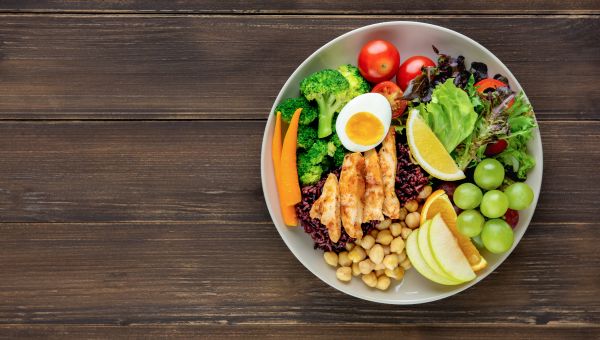
More ways to love the low-sodium life
“There are actually two versions of the DASH diet,” says Challapalli. “One is the standard DASH diet, which recommends a limit of 2,300 mg of sodium daily. Then there’s a lower-sodium version, which is stricter. That version recommends up to 1,500 mg daily.” (Ask your HCP which version is appropriate for you based on your blood pressure and disease risk.)
But less salt doesn’t have to mean less flavor. Enjoy tasty, low-salt meals with these simple tricks:
- Sautee onions or heat garlic for a savory base, instead of using broth or consommé.
- Add lemon, lime, vinegar, or vegetables pickled in vinegar (not salt or brine).
- Choose fresh veggies over canned. Frozen vegetables are often okay but check the nutrition facts to make sure they’re low in sodium.
- Move spices to the stovetop or a counter rack. It’s easy to forget about your flavor potential when seasonings are hiding in the back of the pantry. (Get more kitchen makeover tips for weight management.)
Roasted red peppers, sundried tomatoes, and olives are potentially healthy toppings, but choose ones jarred in olive oil or vinegar, instead of salt or brine, and check the sodium content.
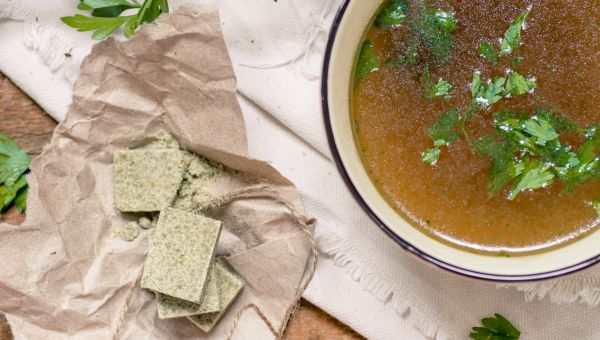
Beware of bouillon (and other sneaky sodium sources)
Sodium can hide in some truly surprising places. Always check labels, even on foods you wouldn’t normally consider salty. Here are some potentially high-sodium foods you might not expect:
- Sliced breads, biscuits, and crackers
- Instant oatmeal and cereals
- Nut butters
- Rice and potato mixes
- Vegetable juices
- Specialty coffee beverages
- Canned and instant soups
“Stay away from fast foods as much as you can,” adds Challapalli. “At regular restaurants, dishes usually have quite a bit of salt in them, too—more than what you’d use at home—so don’t add table salt.” When eating out, tell the person taking your order you’re on a low-sodium diet, as well. Most kitchens can accommodate DASH restrictions.
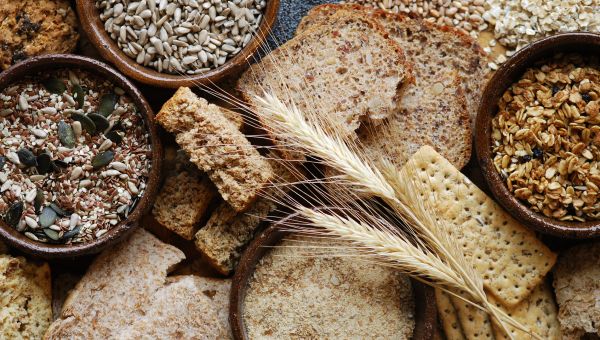
Get in more whole grains
Whole grains are ones that still have their kernels intact. (Think brown rice instead of white.) The kernel lends whole grains more fiber and essential nutrients like potassium, magnesium, and folate than refined grains. That’s beneficial because:
- Fiber helps to lower blood pressure and cholesterol
- Potassium is key to healthy blood pressure control
- Fiber keeps you feeling full longer and can help keep your blood sugar levels steady between meals
Make batches of whole grains like bulgur, barley, and rye during weekly meal prep. Add them to salads and wraps or enjoy as a side dish with mixed veggies.
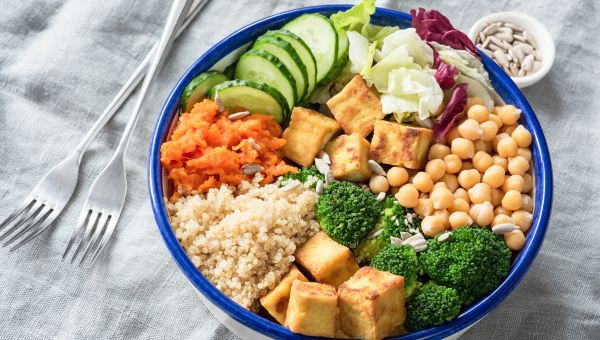
Embrace Meatless Mondays
While you are allowed up to two servings of lean meat like chicken or salmon per day, you should generally avoid red meat on the DASH diet. You should limit it on any diet since it’s associated with a greater risk of heart disease and colon cancer. Phase red meat out of your diet gradually, beginning with Meatless Mondays. Get started with easy meatless meals.
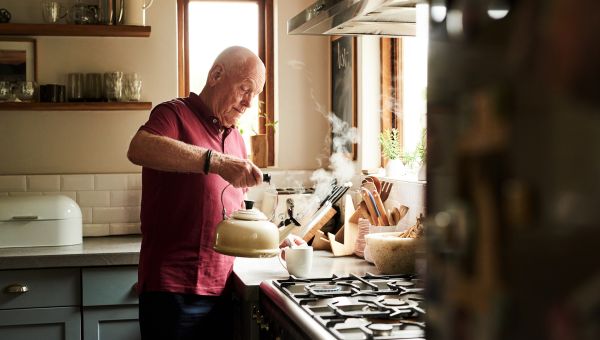
Cut back on alcohol and caffeine
Many people with high blood pressure can have a small amount of caffeine daily—about two cups of coffee or less. Caffeine can raise blood pressure, but the effect is typically mild and temporary. Double-check with your HCP to determine how much, if any, is appropriate for you, considering your personal history and lifestyle. Choose herbal teas like chamomile or rooibos over coffee to sidestep caffeine.
When it comes to alcohol, if you don’t drink, don’t start. And if you do decide to drink, stick to the recommended daily limits, no more than two drinks per day for men and people assigned male at birth or one for women and people assigned female at birth. But you may want to reduce your intake even more, based on research into the health effects of alcohol.
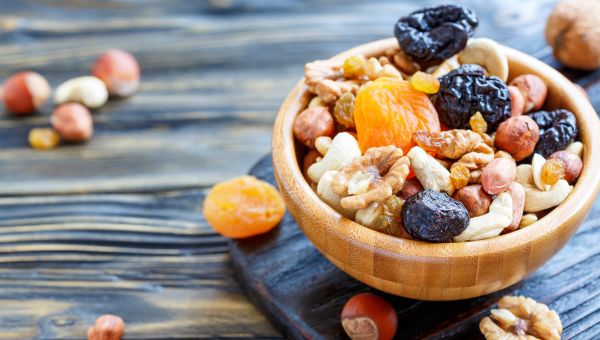
Nosh on fruit and nuts
Added sugar is restricted on the DASH diet, but natural sweets are encouraged. Snack on fruit and unsalted nuts for a filling, protein-fiber combo between meals. Nuts may help lower your LDL levels and walnuts, specifically, are a brain-boosting food. Some tasty pairs include:
- Almonds and a banana
- Pistachios and a pear
- Walnuts and a fig
- Grapes and peanuts
- Cashews and orange slices
“In addition to fresh fruits and unsalted nuts, low-fat dairy like cottage cheese or plain Greek yogurt is good for snacking,” says Challapalli. “But you have to be careful because most yogurts are processed and have added salt, sugar, and other ingredients. Plain yogurt with your own ingredients is the way to go.”

Exercise is a part of the diet
Exercise is a proven way to help lower your blood pressure, so it’s considered a key part of the DASH diet. Check with your HCP about the type and duration of an exercise routine that would make the most sense for you.
Most experts recommend aiming for 30 minutes of moderate-intensity physical activity on most days of the week. If you find it hard to carve out 30 minutes or more at a time to exercise, you can break your activity into shorter chunks throughout the day. The important thing is to get a total of 150 minutes of moderate-intensity exercise weekly—and more is even better.
Has it been a while since you’ve gotten moving? Start with a 15-minute walk each morning and evening and try these no-equipment moves you can do anywhere.
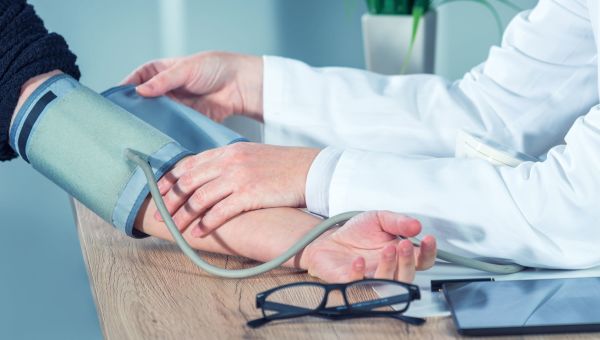
What if your blood pressure stays high?
Talk to your HCP about a blood pressure goal and timeline that’s right for you. If you don’t meet your target after an agreed-upon amount of time, your HCP may recommend reducing your salt intake to 1,500 mg daily, instead of 2,300 mg.
Some people need to take blood pressure medication in addition to making lifestyle changes. It’s important to continue eating right and exercising even if you start taking medicine. Doing so can make your prescriptions work more effectively. Some people are able to eventually taper off their medication with supervision from their HCP by following DASH guidelines, as well.

National Heart, Lung, and Blood Institute. DASH Eating Plan. Last updated December 29, 2021.
American Heart Association. Managing Blood Pressure with a Heart-Healthy Diet. Last Reviewed: October 31, 2016
National Heart, Lung, and Blood Institute. IN BRIEF: Your Guide To Lowering Your Blood Pressure With DASH. Revised August 2015.
National Heart, Lung, and Blood Institute. Your Guide to Lowering Blood Pressure. May 2003.
American Heart Association. Understanding Blood Pressure Readings. Accessed January 28, 2022.
National Institute of Diabetes and Digestive and Kidney Diseases. Eating, Diet, & Nutrition for Kidney Stones. Last Reviewed May 2017.
Centers for Disease Control and Prevention. High Blood Pressure Facts. May 15, 2024.
More On


video
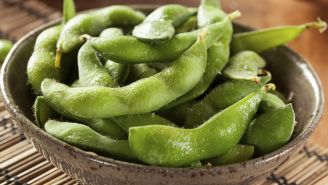
article
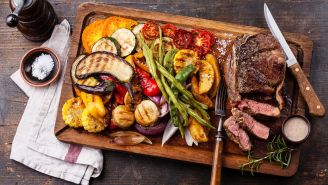
slideshow


video


video
